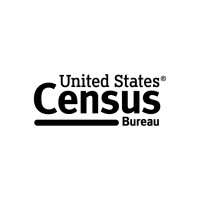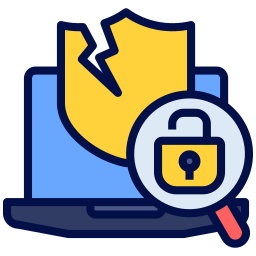
Assurance Maladie Company Cyber Security Posture
ameli.frTravailler à l’Assurance Maladie, c’est donner une nouvelle dimension à votre métier et agir au quotidien pour la protection de notre système de santé. Participez à une grande diversité de projets dans un cadre bienveillant et soyez fier de contribuer à une mission essentielle : agir ensemble, protéger chacun. Depuis près de 80 ans, l'Assurance Maladie joue un rôle majeur au service de la solidarité nationale. Nous sommes convaincus que la clé de la pérennité du système de santé relève d'une responsabilité collective et réside dans l'implication forte de chacun de ses acteurs. Au sein de ce système, l'Assurance Maladie assume une triple mission : ⏺️ garantir un accès universel aux droits et permettre l'accès aux soins ⏺️ accompagner chacun dans la préservation de sa santé ⏺️ améliorer l'efficacité du système Toutes ses missions, l’Assurance Maladie les mène avec le souci d’assurer la meilleure qualité de service. Elle s’appuie pour cela sur un réseau de proximité qui couvre l’ensemble du territoire et l’engagement de plus de 80 000 collaborateurs qui agissent jour après jour à l’échelle départementale, régionale et nationale. Ensemble, au quotidien, ils font vivre ses valeurs d’universalité, de solidarité, de responsabilité et d’innovation.
Assurance Maladie Company Details
assurance-maladie
23361 employees
196417
922
Government Administration
ameli.fr
Scan still pending
ASS_1619018
In-progress
Between 900 and 1000
This score is AI-generated and less favored by cyber insurers, who prefer the TPRM score.
 Assurance Maladie Global Score
Assurance Maladie Global Score.png)

Assurance Maladie Company Scoring based on AI Models
| Model Name | Date | Description | Current Score Difference | Score |
|---|---|---|---|---|
| AVERAGE-Industry | 03-12-2025 | This score represents the average cybersecurity rating of companies already scanned within the same industry. It provides a benchmark to compare an individual company's security posture against its industry peers. | N/A | Between 900 and 1000 |
Assurance Maladie Company Cyber Security News & History
| Entity | Type | Severity | Impact | Seen | Url ID | Details | View |
|---|---|---|---|---|---|---|---|
| Assurance Maladie | Breach | 90 | 4 | 03/2022 | ASS133730422 | Link | |
Rankiteo Explanation : Attack with significant impact with customers data leaksDescription: The accounts of healthcare staff of insurance body l’Assurance Maladie were hacked in a data security incident and had compromised the health data of more than half a million people in France. The compromised data included the names, surnames, date of birth, social security numbers, GP details, and levels of reimbursement for at least 510,000 people. Around19 accounts, mainly belonging to pharmacists, were affected after their email addresses were compromised. | |||||||
| Cnam (Caisse nationale de l’Assurance Maladie) | Breach | 80 | 4 | 03/2022 | CNA1491522 | Link | |
Rankiteo Explanation : Attack with significant impact with customers data leaksDescription: The accounts of 19 healthcare staff of France’s Caisse Nationale d’assurance Maladie (Cnam) health insurance body were hacked leaking the sensitive information of its patients. The personal information of about 510,000 people including names, surnames, date of birth, social security numbers, GP details, and levels of reimbursement was accessed by the attackers. The health care upon learning about the incident immediately filed a complaint and notified the affected individuals. | |||||||
Assurance Maladie Company Subsidiaries

Travailler à l’Assurance Maladie, c’est donner une nouvelle dimension à votre métier et agir au quotidien pour la protection de notre système de santé. Participez à une grande diversité de projets dans un cadre bienveillant et soyez fier de contribuer à une mission essentielle : agir ensemble, protéger chacun. Depuis près de 80 ans, l'Assurance Maladie joue un rôle majeur au service de la solidarité nationale. Nous sommes convaincus que la clé de la pérennité du système de santé relève d'une responsabilité collective et réside dans l'implication forte de chacun de ses acteurs. Au sein de ce système, l'Assurance Maladie assume une triple mission : ⏺️ garantir un accès universel aux droits et permettre l'accès aux soins ⏺️ accompagner chacun dans la préservation de sa santé ⏺️ améliorer l'efficacité du système Toutes ses missions, l’Assurance Maladie les mène avec le souci d’assurer la meilleure qualité de service. Elle s’appuie pour cela sur un réseau de proximité qui couvre l’ensemble du territoire et l’engagement de plus de 80 000 collaborateurs qui agissent jour après jour à l’échelle départementale, régionale et nationale. Ensemble, au quotidien, ils font vivre ses valeurs d’universalité, de solidarité, de responsabilité et d’innovation.
Access Data Using Our API

Get company history
.png)
Assurance Maladie Cyber Security News
Microsoft Used China-Based Support for Multiple U.S. Agencies, Potentially Exposing Sensitive Data
Microsoft says it will no longer use China-based engineers to support the Pentagon. But ProPublica found that the tech giant has relied on ...
Introducing the smarter, more sophisticated Malwarebytes Trusted Advisor, your cybersecurity personal assistant
Malwarebytes Trusted Advisor has had an update, and it's now sharper, smarter, and more helpful than ever.
Trump AI plan calls for cybersecurity assessments, threat info-sharing
The U.S. government will expand information sharing, cyber risk evaluations and guidance to the private sector to address the cybersecurity ...
Bad Break In CIBR Led To Our Exit And The Skip Of A New Entry
A bad break in cybersecurity stocks led to our exit, even before knowing the reason for it. It also led to us skipping the next setup.
Agreement for critical CISA cyber threat analysis work expires
CISA says it's reviewing an agreement with Lawrence Livermore National Laboratory that involves the lab analyzing "CyberSentry" threat data.
Cyber Career Opps: Weighing Certifications vs. Degrees
Longtime CISO Melina Scotto joins Dark Reading to discuss career advice gleaned from her 30 years in the cyber industry.
Outtake’s agents resolve cybersecurity attacks in hours with OpenAI
Outtake's cybersecurity agents automate detection and remediation with speed and precision enterprise security teams can trust.
Cybersecurity firm 360 backs Huawei chips despite return of Nvidia
Qihoo 360 founder says the US-sanctioned firm will support domestic chips as 'the more they are used, the more they will improve'.
3 Top Cybersecurity Stocks To Buy Now
Cybersecurity Stock #1: Cyberark Software (CYBR) · Cybersecurity Stock #2: Broadcom (AVGO) · Cybersecurity Stock #3: Zscaler (ZS).

Assurance Maladie Similar Companies

France Travail
France Travail est un acteur majeur du marché de l’emploi en France où il s’investit pour faciliter le retour à l’emploi des demandeurs d’emploi et offrir aux entreprises des réponses adaptées à leurs besoins de recrutement. Les 55 000 collaborateurs de France Travail œuvrent au quotidien pour êtr

Ekurhuleni Metropolitan Municipality
Ekurhuleni is a Metropolitan Municipality, consisting of 11 erstwhile municipalites of the East Rand, Gauteng. Ekurhuleni Metropolitan Municipality is a municipality with a Mayoral Executive System which allows for the exercise of executive authority through an Executive Mayor in whom the execu

Cebu City Government
Cebu City is located on the central eastern part of Cebu Province, an island at the center of the Visayas in Southern Philippines. As defined by the Bureau of Land Location Monument (BLLM) No. 1, Cebu Cadastral Survey, it is 10 degrees 17 minutes North Latitude and 123 degrees 54 minutes East Longit

Consejo Nacional Electoral
Definición: El Consejo Nacional Electoral es el ente rector del Poder Electoral, responsable de la transparencia de los procesos electorales y refrendarios; garantiza a los venezolanos la eficiente organización de todos los actos electorales que se realicen en el país y en particular, la claridad

U.S. Census Bureau
The Census Bureau serves as the nation’s leading provider of quality data about its people and economy. We have been headquartered in Suitland, Maryland since 1942, and currently employ about 4,285 staff members. We are part of the U.S. Department of Commerce and overseen by the Economics and Statis

Prefeitura Municipal de Campinas
Prefeitura Municipal de Campinas - www.campinas.sp.gov.br Campinas City Hall (Brasil) Situada no coração de São Paulo, o estado mais desenvolvido do Brasil, Campinas vive o seu melhor momento em décadas, tanto no campo econômico quanto no social. A cidade nunca esteve tão preparada para receber

Frequently Asked Questions
Explore insights on cybersecurity incidents, risk posture, and Rankiteo's assessments.
Assurance Maladie CyberSecurity History Information
How many cyber incidents has Assurance Maladie faced?
Total Incidents: According to Rankiteo, Assurance Maladie has faced 2 incidents in the past.
What types of cybersecurity incidents have occurred at Assurance Maladie?
Incident Types: The types of cybersecurity incidents that have occurred incidents Breach.
How does Assurance Maladie detect and respond to cybersecurity incidents?
Detection and Response: The company detects and responds to cybersecurity incidents through law enforcement notified with True and communication strategy with filed a complaint, notified the affected individuals.
Incident Details
Can you provide details on each incident?

Incident : Data Breach
Title: Data Breach at Caisse Nationale d’assurance Maladie (Cnam)
Description: The accounts of 19 healthcare staff of France’s Caisse Nationale d’assurance Maladie (Cnam) health insurance body were hacked leaking the sensitive information of its patients. The personal information of about 510,000 people including names, surnames, date of birth, social security numbers, GP details, and levels of reimbursement was accessed by the attackers. The health care upon learning about the incident immediately filed a complaint and notified the affected individuals.
Type: Data Breach
Attack Vector: Account Hacking

Incident : Data Breach
Title: Data Security Incident at l’Assurance Maladie
Description: The accounts of healthcare staff of insurance body l’Assurance Maladie were hacked in a data security incident and had compromised the health data of more than half a million people in France.
Type: Data Breach
Attack Vector: Email Compromise
What are the most common types of attacks the company has faced?
Common Attack Types: The most common types of attacks the company has faced is Breach.
How does the company identify the attack vectors used in incidents?
Identification of Attack Vectors: The company identifies the attack vectors used in incidents through Email Compromise.
Impact of the Incidents
What was the impact of each incident?

Incident : Data Breach CNA1491522
Data Compromised: names, surnames, date of birth, social security numbers, GP details, levels of reimbursement

Incident : Data Breach ASS133730422
Data Compromised: names, surnames, date of birth, social security numbers, GP details, levels of reimbursement
What types of data are most commonly compromised in incidents?
Commonly Compromised Data Types: The types of data most commonly compromised in incidents are names, surnames, date of birth, social security numbers, GP details, levels of reimbursement, Personal Information and Health Data.
Which entities were affected by each incident?

Incident : Data Breach CNA1491522
Entity Type: Health Insurance Body
Industry: Healthcare
Location: France
Customers Affected: 510000

Incident : Data Breach ASS133730422
Entity Type: Insurance Body
Industry: Healthcare
Location: France
Customers Affected: 510,000 people
Response to the Incidents
What measures were taken in response to each incident?

Incident : Data Breach CNA1491522
Law Enforcement Notified: True
Communication Strategy: filed a complaint, notified the affected individuals
Data Breach Information
What type of data was compromised in each breach?

Incident : Data Breach CNA1491522
Type of Data Compromised: names, surnames, date of birth, social security numbers, GP details, levels of reimbursement
Number of Records Exposed: 510000
Sensitivity of Data: High
Data Exfiltration: True
Personally Identifiable Information: True

Incident : Data Breach ASS133730422
Type of Data Compromised: Personal Information, Health Data
Number of Records Exposed: 510,000
Sensitivity of Data: High
Personally Identifiable Information: names, surnames, date of birth, social security numbers, GP details, levels of reimbursement
Investigation Status
How does the company communicate the status of incident investigations to stakeholders?
Communication of Investigation Status: The company communicates the status of incident investigations to stakeholders through were filed a complaint and notified the affected individuals.
Initial Access Broker
How did the initial access broker gain entry for each incident?

Incident : Data Breach ASS133730422
Entry Point: Email Compromise
Additional Questions
Impact of the Incidents
What was the most significant data compromised in an incident?
Most Significant Data Compromised: The most significant data compromised in an incident were names, surnames, date of birth, social security numbers, GP details, levels of reimbursement, names, surnames, date of birth, social security numbers, GP details and levels of reimbursement.
Data Breach Information
What was the most sensitive data compromised in a breach?
Most Sensitive Data Compromised: The most sensitive data compromised in a breach were names, surnames, date of birth, social security numbers, GP details, levels of reimbursement, names, surnames, date of birth, social security numbers, GP details and levels of reimbursement.
What was the number of records exposed in the most significant breach?
Number of Records Exposed in Most Significant Breach: The number of records exposed in the most significant breach was 510.5K.
Initial Access Broker
What was the most recent entry point used by an initial access broker?
Most Recent Entry Point: The most recent entry point used by an initial access broker was an Email Compromise.
What Do We Measure?
















Every week, Rankiteo analyzes billions of signals to give organizations a sharper, faster view of emerging risks. With deeper, more actionable intelligence at their fingertips, security teams can outpace threat actors, respond instantly to Zero-Day attacks, and dramatically shrink their risk exposure window.
These are some of the factors we use to calculate the overall score:
Identify exposed access points, detect misconfigured SSL certificates, and uncover vulnerabilities across the network infrastructure.
Gain visibility into the software components used within an organization to detect vulnerabilities, manage risk, and ensure supply chain security.
Monitor and manage all IT assets and their configurations to ensure accurate, real-time visibility across the company's technology environment.
Leverage real-time insights on active threats, malware campaigns, and emerging vulnerabilities to proactively defend against evolving cyberattacks.




